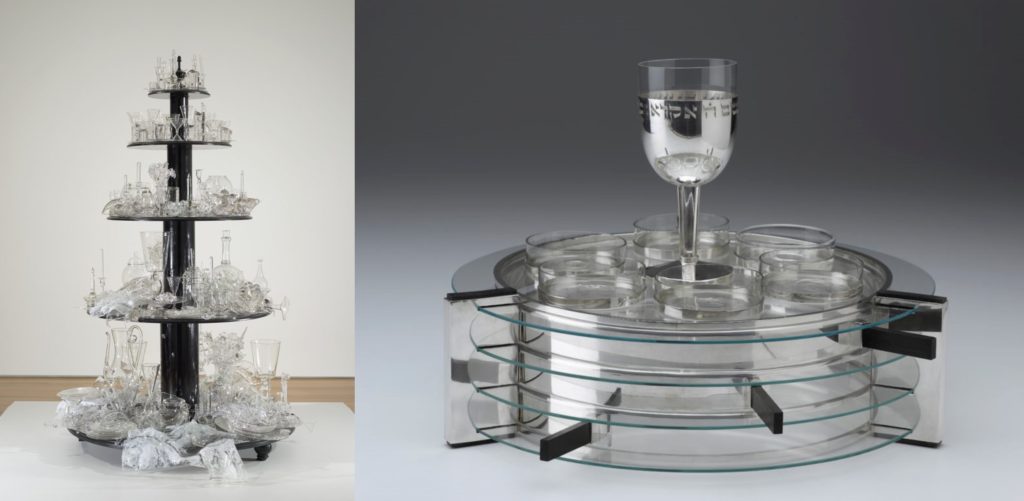Compare and Connect: How do objects represent traditions and those who uphold those traditions? (Ready to Go Resource)
Ready-to-go resources are short, flexible learning activities that center art as texts. In “Compare and Connect” students use a guiding question to compare works of art within the context of a shared theme and produce brief writing examples. The activities are presented in google slide decks with teaching notes to make classroom implementation easy.
Guiding Question: How do objects represent traditions and those who uphold traditions?
Featuring Beth Lipman’s Bride and Ludwig Yehuda Wolpert’s Passover Seder Set with Plates, Dishes, and Wine Cup.
Make your own copy! Check the slide notes for the teacher’s guide.
Total Activity Pacing: 30 minutes, across two days
Pacing: 1 min
Grade(s): 6-8
Activity Overview:
- In this Compare and Connect activity, students will analyze two glass artworks. Traditions are important parts of our identities and can help shape who we are. Through discussion and writing, students will determine how these artworks can represent tradition and someone’s identity when it doesn’t include a figure or a portrait. The artworks will serves as inspiration in a grade level ELA writing piece where students share if the objects in one of the paintings represent the traditions of the culture and/or title of the work or not.
- In Day One: Discuss, students will look at the artwork and identify the different objects that they see. Students will share what the objects could be used for and who might use the objects. After learning the context and background knowledge of the artworks, students can share in partners or small groups about the connection between the objects and the tradition.
- In Day Two: Write, students will write an opinion piece explaining if the objects in the artworks represent the traditions of the Jewish identity (Passover Plate) or a bride’s identity (Bride).

